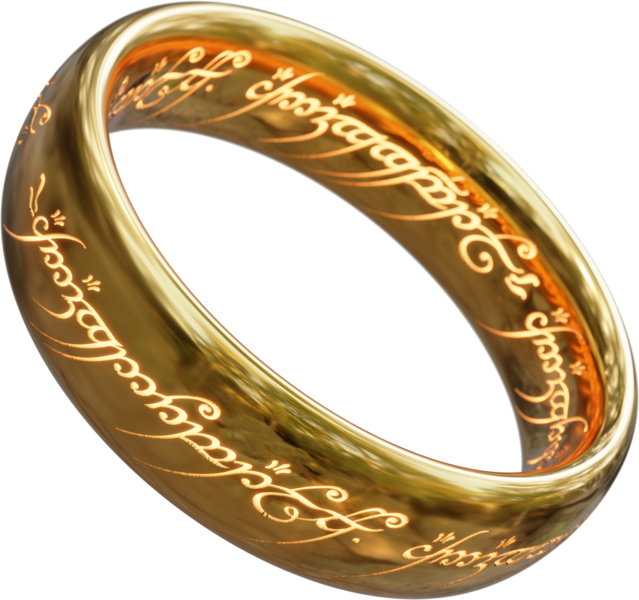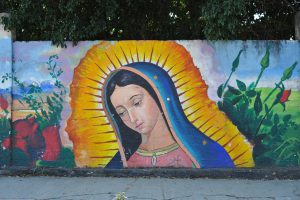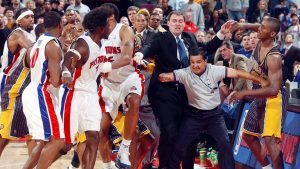Imagine a world with no mythical creatures such as the famous hobbits, with large bare feet and small bodies living peacefully within the Shire, or wizards with immense power and leadership expertise, or elves with eternal wisdom whether from battle or from experience or even derived from the ethereal beauty in which they withhold. Let us not forget dwarves, orcs, ents, trolls, and ogres who have all contributed largely to the creation of fantasy worlds to delve into and escape. We owe the creation of some of these creatures and the mass popularity of them to the father of fantasy, J.R.R. Tolkien.

John Ronald Reuel Tolkien was orphaned at a young age, with his father dying at four years old, and then his mother passed away from sickness when he was eleven. He was never like the other boys of his youth; he preferred his imagination over real people. His ability to create and imagine different worlds filled with unthinkable creatures seemed to be infinite. He often created stories out of the simplest of things, but somehow made them new, original, and unique. By the time he went to study at Oxford, he had already created his own language called Elvish.1 He amused himself by spinning his own fairytales in private, in a fantasy world of his own creation. But that was simply not enough. He wanted to break the glass ceiling of what the world had begun to understand and know about the fantasy genre. He wanted to be remembered for transpiring one of the greatest epic fantasies of all time, and he would stop at nothing to do so.
J.R.R. Tolkien attended King Edward’s school in Birmingham, England, where he and his three closest friends formed the “Tea Club, Barrovian Society” as an artistic outlet. His studies shifted to that of language—ancient and modern— English language and literature. His imagination, at a fundamental level, was basically linguistic. 2 “A culture is its language” after all, and no one else could master and create languages in comparison to Tolkien. Here he reached a turning point in his career, detecting that the language of ancient Greek was far too logical and neat. He found himself especially transfixed on the runes of the North, specifically in Denmark and Finland, where the runes are almost cryptic even today. That period of the runes also marked the time when knights wore chain-mail and there was a general belief in dragons and in Norse gods. This is where Tolkien truly found his inspirations for Middle Earth, an imaginary past and place, in which he could reinvigorate the old tales, the old ways, and the ancient morals.3

Shortly after graduating from Oxford, on the brim of entering into the workforce and pursuing his passion for language, everything was put to a sudden halt. He had to join in the efforts of World War I, along with the rest of the T.C.B.S. During his fighting in the Battle of the Somme, Tolkien discovered some of his greatest and darkest ideas, which would later shape the creation of his prominent works. All the while, he was still designing multiple languages and constantly thinking of new fanatical worlds full of rich history and creative monsters. Tolkien later contracted trench fever and was sent back to England as one of only two survivors of his T.C.B.S. colleagues. In early 1917, Tolkien started composing his short story The Book of Lost Tales, and resumed his work on his present language creation.4
By the time Tolkien fought in World War I, he had already established some key concepts of a unique mythology through poetic writing, language invention, and visual representation through both paintings and drawings. After the War, Tolkien resumed with his mythic work utilizing a large variety of creative outlets, adding an even greater focus on developing a narrator. This was a pivotal moment in which his first version of his mythology emerged as one coherent whole, rather than as a series of individual creative pieces. His creativity worked in a logical way to bring to life the existence of his whole new realm, meaning that it was a fabricated fantasy world intertwined deeply in its own culture and language. This helped the characters feel real and authentic to the reader and gave vivid life to the story, which this genre of literature had never seen before. But, to take on such a heavy task was not one he bore lightly. He was extremely critical of himself and there were many times when he wanted to give up or would have to start from scratch again. He had to find a way to weave the strands of his early poetic and created language explorations into a unique body of mythology. Then, he also had to discover a way to utilize the knowledge and study he had done of Germanic and Norse myths and legends to link his body of invented mythology together organically. Tolkien was able to do what no one had done before. He fully integrated his invented languages into the narrative of his story and world. This became a place where one could not exist without the other.5
Tolkien was also influenced by Christian beliefs, specifically of the Catholic faith, which his mother had devoted her life to before dying. He was intellectually and spiritually focused on Christian beliefs and thoughts while simultaneously including his own study and research of pagan literature and cultures. In his own mythical process, Tolkien moved along the creative path of the creator and merged a unique foundation for his fantasy world. Through this process, he learned how to maneuver his own shadows and demons to convey a deeper truth and meaning. By the time Tolkien had started really working on his mythology, he had already published his epic poem The Battle of the Eastern Field, along with a volume of poems.6 At this point in his life, his early mythical work was already being published and therefore being seen and read by the public. Tolkien’s goal was to create a private, or secret place, where he could express his creative imagination.

Fantasy novels certainly existed before Tolkien, and the popularity of novels with fantastic elements such as magic and dragons was nothing new. But, with these tales and fables, the goal for these main characters was not what Tolkien had in mind. The fate of the fantasy worlds before was often considered secondary and focused more on returning to the modern-day. Tolkien may not have been the first to take his fantasy world as his own world. But, he certainly made the most successful effort in creating a universe where the fate of the entire world rested on the heroes’ shoulders, all while those same heroes changed as the story progressed. Finally, the day had come when J.R.R. Tolkien had his finished project. After nearly twelve years of writing and drafting Lord of the Rings, it was published to the world in July of 1954, with the next two books being published separately in the next 15 months.7
The public reception of Tolkien’s work was groundbreaking. His popularity continued to flourish, and his reputation in the United States climbed significantly in 1965 when the paperback edition was printed. College students and younger people were some of his biggest fans and were the reason the books sold so well overseas. It was a way for students to escape from the complicated world of the 1960s to one where you could live out your fantasy dreams right along with the protagonist. It seemed to be a perfect match between a generation and the precise need of escapism it demanded. In 1966, with the release of The Hobbit, which is a prequel to LOTR, it became America’s best-selling mass-market paperback of 1966.8
J.R.R. Tolkien is noted as the father of modern fantasy for his unique take on elements already seen in fairytales and fictional stories. For instance, the way you think of or imagine an elf is most likely due to him. He reinvented elves after Norse myths where they are depicted as long-lived, immortal, or even god-like. Whereas before, elves had been known as small, mischievous, and often invisible fairies. His influence and use of a medieval fantasy setting is still very much the norm in fantasy even today. He transformed the fantasy genre by being one of the first to ever invest and risk printing three different volumes following a single storyline, whereas now, it is extremely hard to find a fantasy novel that doesn’t stretch at least three books.9 Tolkien established a long list of tropes and clichés that many fantasy writers have been following ever since. Tolkien himself has influenced so much, whether reading about dark lords or seeing massive trilogies, he has had a hand in its popularity. He also added in the ethereal elements including elves and dwarves that are seen so much nowadays. His inclusion of a quest, in the land of Middle Earth, has been extremely inspirational to other authors in the fantasy realm as well. There is even a saying among writers about novels that explicitly try to avoid these tropes, as they refer to it as an “anti-Tolkien” story. Authors who have stated their books were a direct influence from Tolkien are Terry Brook, Robert Jordan, R.A. Salvatore, and George R.R. Martin.10

Then, his fame reached even further heights when it was revealed in 1998 that New Line production cinema would commit $130 million to one of the biggest gambles in film history: Peter Jackson would make three films simultaneously. Jackson knew a lot was riding on his vision for the films since it was extremely controversial to try to take on such a beloved series. After more than a year of filming, on December 19, 2001, the first film for Lord of the Rings was released and was a complete success. These three films together earned nearly $3 billion at worldwide box offices.11 Tolkien’s masterpieces have proved that there was and still is an enormous audience for fantasy works, far beyond the American students who had initially embraced his books. The Tolkien trilogy has paved the way for subsequent fantasy works in literature, with George Martin’s book and TV adaption of Game of Thrones, video games such as “Dungeons and Dragons” and hundreds of different TV/films. In addition to all of that, Peter Jackson’s storytelling and the technology he used while filming and producing Lord of the Rings has continued to influence projects even in the twenty-first century. This continues to show just how impactful J.R.R. Tolkien has been to fantasy in general, not just in the literary sense, but also in the film industry and video game world. Today, his fanbase is so much larger and more diverse than I think Tolkien himself knew was possible. John Ronald Reuel Tolkien was forty-five when he started writing the first Lord of the Rings book, as a sequel to his 1937 The Hobbit. He was 63 when the third and final novel in the trilogy, Return of the King, was published. Although he passed in 1973, his legacy continues and will continue for many generations to come.
- Wayne Chandler and Carrol Fry, “Tolkien’s Allusive Backstory: Immortality and Belief in the Fantasy Frame,” Mythlore: A Journal of J.R.R. Tolkien, C.S. Lewis, Charles Williams, and Mythopoeic Literature 35, no. 2 (April 15, 2017), https://dc.swosu.edu/mythlore/vol35/iss2/7. ↵
- Andrew S Higgins, “The Genesis of J.R.R. Tolkien’s Mythology” (Thesis, Cardiff, United Kingdom, Cardiff Metropolitan University, 2015), 24. ↵
- “J.R.R. Tolkien: Author of the Century,” Harper’s Magazine, September 2001, Gale In Context: Opposing Viewpoints, https://link.gale.com/apps/doc/A77702895/GPS?u=txshracd2556&sid=GPS&xid=8d965ef2. ↵
- Andrew S Higgins, “The Genesis of J.R.R. Tolkien’s Mythology” (Thesis, Cardiff, United Kingdom, Cardiff Metropolitan University, 2015), 25. ↵
- Andrew S Higgins, “The Genesis of J.R.R. Tolkien’s Mythology” (Thesis, Cardiff, United Kingdom, Cardiff Metropolitan University, 2015), 44. ↵
- Andrew S Higgins, “The Genesis of J.R.R. Tolkien’s Mythology” (Thesis, Cardiff, United Kingdom, Cardiff Metropolitan University, 2015), 55. ↵
- Tim Gray, “Tolkien’s First ‘Lord of the Rings’ Book Was Published 63 Years Ago,” Variety, July 18, 2017, https://variety.com/2017/vintage/features/tolkien-lord-of-the-rings-1202506533/. ↵
- Tim Gray, “Tolkien’s First ‘Lord of the Rings’ Book Was Published 63 Years Ago,” Variety, July 18, 2017, https://variety.com/2017/vintage/features/tolkien-lord-of-the-rings-1202506533/. ↵
- James Kelly, “8 Ways Tolkien Changed Modern Fantasy Forever,” James T Kelly (blog), November 27, 2019, https://jamestkelly.com/8-ways-tolkien-changed-modern-fantasy-forever/. ↵
- James Kelly, “8 Ways Tolkien Changed Modern Fantasy Forever,” James T Kelly (blog), November 27, 2019, https://jamestkelly.com/8-ways-tolkien-changed-modern-fantasy-forever/. ↵
- Tim Gray, “Tolkien’s First ‘Lord of the Rings’ Book Was Published 63 Years Ago,” Variety, July 18, 2017, https://variety.com/2017/vintage/features/tolkien-lord-of-the-rings-1202506533/. ↵




11 comments
Seth Roen
Truly, the fantasy genre would not have been as we know it would not have existed without J.J.R. Tolkien. Who is one of my favorite authors. It’s interesting that a great inspiration was the old Norse tales and legends, and added with a strong influence by Christian values and stories, creating a world that everyone loves. It is strange before Tolkien’s published, fantasy was that of people traveling to return to the modern day, whereas people wish to return to a fantasy world.
Carlos Hinojosa
This was a great article and I learned a great deal about the Lord of the Rings. I’m going to be completely honest I have never read any of the books nor watched any of the movies. However, I know that they were masterpieces and that I probably should at least give one of them a chance. This article actually made me think about doing that so I give it a 10/10.
Aaron Fanning
I remember reading and watching the movies of lord of the rings but I’ve never thought about the author Tolkien’s story but after reading this article the story that he created means so much to people or has influenced people through his art of storytelling.From me reading this the importance that he holds on the fantasy genre is mind blowing with himcreating his own style of writing and working on his craft to come up with the idea and creativity of the Hobbit and Lords Of The Rings.
Christopher Hohman
Nice article. I have heard of Tolkien of course, but never understood how he created the Lord of the Rings Trilogy and The Hobbit. It is unfortunate that he lost his parents at such a young age. I am also guessing that he did not have very many friends because of his tendency to spend all his time in his own mind creating his various worlds and languages. It is also fascinating that Tolkien served during the Great War. I wonder if his experience in the war helped shape his ideas of Sauron or the evil creatures in his stories? Or maybe it was the whole war between good and evil that plays out in those three books.
Nydia Ramirez
Hi Brittney!
I have always been a fan of Tolkien but I never looked into who he was as a person or the change he made in literature. This article taught me so much! I never put much thought into how modern fantasy came to be. For me, it just was but when you mentioned that the way we think of or imagine an elf is most likely due to him, it made me really transform my perception. Tolkien truly did reinvented parts of fantasy after Norse myths and as a result; his influence and use of a medieval fantasy setting is extremely prevalent to this day. He is a revolutionary in the genre realm.
Matthew Gallardo
before this article, I knew very little on the creator of lord of the rings, and I didnt even know his name. This article has been really useful on helping me learn about J.R.R. Tolkien, from his early life to his time in the battlefields of world war 1, to his final book in the trilogy. To hear that someone who had such harsh beginnings, with both parents dying at an early age, made it to such heights is awe inspiring to say the least. I’m extremely glad I read this article.
Lucia Herrera
This is such an interesting topic. I had no idea about the person “Tolkien” behind the lord of the rings. Its great to know about Tolkien’s life and how he was inspired to write about such a magical series. I will definitely appreciate his work more after reading this.
Jonathan Ornelaz
Brittney,
Your article on Tolkien and how it influenced new generations of writers and creators is exactly right. I think without Tolkien created the world he did and the the story he developed there would not be the way writers write today or tv shows the way they are on tv. He had a big influence on shows that are not based on kingdoms and families trying to fight to save their linage. I think alot of stories use his techniques in developing their thought process on how they will try to entertain a reader or viewer.
I like the way you not only covered him writing what he is most known for, but also how he started the process of developing his stories and his setting. You also covered the things that really led to him being able to see his ideas and thoughts on paper and refining his craft to where he was able to make the middle three stories and the early three stories, and then his works were made in 6 successful films that were a big risk, but paid off perfectly.
I think you did an amazing job telling who Tolkien was, but also what he did to help others be successful as well.
Trenton Boudreaux
I must confess I have never really read much of Tolkien’s work, aside from the Hobbit, but I certainly hold writers like Tolkien to a high regard. I find it impressive that he was able to create his own language whilst studying in college and serving in the trenches of WWI. Overall, this article generated a new found respect for Tolkien in my eyes.
Santos Mencio
As a fan of the fantasy genre and Tolkien in general this was an incredibly enjoyable read. I didn’t know all that much about his early life so getting to read about all the things he did to create the Lord of the Rings series is fascinating. The impact of what he created really can’t be quantified, Tolkien truly revolutionized storytelling in a fantasy setting.